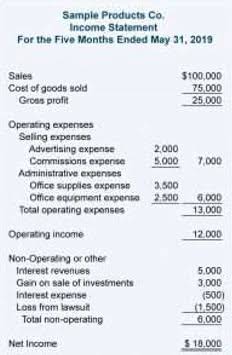
In addition process costing system to setting the sales price, managers need to know the cost of their products in order to determine the value of inventory, plan production, determine labor needs, and make long- and short-term plans. They also need to know the costs to determine when a new product should be added or an old product removed from production. Process costing is used for products produced over a long period, such as several weeks or months. Job costing is used for projects completed in a shorter period, such as a few days or weeks.
- Both process costing and job order costing maintain the costs of direct material, direct labor, and manufacturing overhead.
- Then the Packaging Department transfers the products to Finished Goods Inventory.
- It will be the problem when it comes to different products type, as the accountant still allocates the same cost to all products.
- Companies must develop an effective method for allocating overhead costs to the appropriate cost centers to accurately calculate the production cost.
- Colleges use FTES data to plan and make decisions about course offerings, staffing, and facility needs.
#1. Weighted average costs:

While it has many advantages, manufacturers should know some disadvantages of using a process costing system. These reports may be accompanied by additional information assembled by the accounting department, which provide details regarding how certain costs were incurred and who authorized them. Manufacturing overheads are allocated to each department at $500 per direct labor hour worked.

Understanding Process Costing: A Comprehensive Guide for Business Management

For instance, if the company produces customized products, the consumption of activities can be different for the different products. Hence, the cost can not be allocated based on the completion of the process. Manufacturing companies should follow best practices for cost accounting, such as GAAP and IFRS, to ensure that the process costing system is reliable, accurate, and compliant with regulations. Manufacturing companies should ensure that cost data is confidential and only shared with authorized individuals. Compliance with laws and regulations is crucial for ethical considerations in process costing.
- Cost assigned to units produced or in process are recorded in the inventory asset account, where it appears on the balance sheet.
- Maria already has an expansive deli, bakery, and prepared foods section in the store and sees this opportunity as a viable option to increase sales and its customer base.
- While the service industry does not produce physical products, it can use process costing to calculate the cost of services.
- So, the cost can be allocated by getting it from the activities/processes that have been the actual cause of the cost incurred.
- With meals to go, customers can choose from an array of options and can indicate the quantity of each item and the time of pickup.
Process costing system
This method is helpful for manufacturers with a well-established production process and can accurately predict the cost of production. While a process costing system is designed to be accurate, there can be instances where the system may not provide an accurate cost calculation. This can happen when there are significant variations in the number of materials, labor, or overhead used in the manufacturing process. In such cases, the cost allocation may not be accurate, leading to incorrect pricing decisions. An ABC system can be difficult to set up and operate, and so works best when net sales designed for very specific cost allocation projects that have clearly defined boundaries. In job order cost production, the costs can be directly traced to the job, and the job cost sheet contains the total expenses for that job.

Process Costing System: Examples, Methods, and Steps
Process costing is like an invisible thread that connects the various departments of a manufacturing plant, weaving together the costs of raw materials, labor, and overheads to create a seamless tapestry of production costs. Manufacturing companies use a cost accounting technique to track and allocate the costs of producing a product or service. We calculate this by dividing the total cost Accounting for Technology Companies by equivalent completed units in the production phase.
- Additionally, since all the commodities are standardized and identical, it would be irrational to compute the cost of a single unit in a given batch.
- Since each gallon of paint is identical in composition and goes through the same steps, tracking individual product costs isn’t practical.
- Process costing is optimal when the costs cannot be traced directly to the job.
- It can also lead to errors if the cost allocation process is incorrectly done.
- Manufacturers can use the information provided by process costing to make informed decisions about expanding their production capacity, introducing new products, or investing in new technology.
